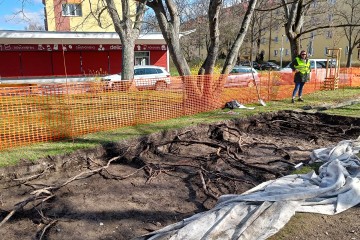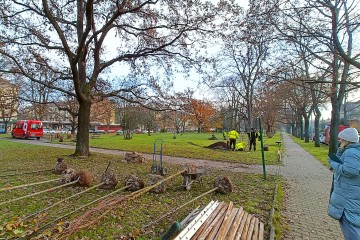What needs to be taken into account when planting trees in the city?
It is important to remember that the city is a very demanding environment for trees. We could list many stress factors - from lack of space and water to the risk of mechanical damage to polluted air. Let's look at the individual factors step by step in order to create ideal conditions for planting that will be beautiful to look at and at the same time fulfill ecosystem services for at least 50 years.
Choosing the right type of tree
Choosing the right type of tree is a critical step to success. The basic parameter represents tolerance to urban conditions. Recently, many nurseries have focused on breeding species resistant to the urban environment. In addition to the factors that must be taken into account when planting, these nurseries also pay attention to the shape of the crown of individual types of trees. Even this apparent detail will influence the future growth of the tree, so that it fits better in the street, and its maintenance is easier.
See how monotonous urban development can be transformed by trees - in this case, in addition, significantly flowering ones. The place thus visually changes during the seasons.
Limited space for the roots and crown of the tree
A simple direct proportionality applies here – the bigger the tree, the more space it needs for its root system and crown. We usually plant a tree in a sidewalk or square, where utility networks and underground structures compete with it, and there is not much space left for it. Proper rooting will prevent the risk of subsequent refutation. A tree in the street usually has to deal with a small space for crown growth. Another potential problem can be generally compacted terrain - the tree needs enough air for its roots as well.
Water and air
We try to get as much water and air as possible to the trees. We need that the substrate in which the tree grows is not compacted. That is why we use so-called structural substrates with a higher level of gravel of different fractions. These will ensure that there is room for air in the gaps between the gravel and at the same time water can reach and accumulate the roots well. We ideally connect the underground space between the individual planting sites with a root path. This will increase the necessary area for the roots and for capturing rainwater.
Mechanical damage to the tree trunk and crown
Caring for a tree does not end with planting, but begins. We protect the above-ground part of the tree – its trunk and crown – against mechanical damage in various ways. The condition of the tree is threatened by passing and parked cars, but also by dog urine. How to limit possible damage? We can choose from variants of trunk protectors for the above-ground part of the tree and a movable metal grid that will limit the load on the immediate root system.
You can see how we approached the restoration of the tree line on Vinohradská třída with the help of rolling cast-iron protective gratings with a trunk protector, and with the help of compacted fine gravel, here:
Ensuring longevity
Planting trees in the city carries many risks, so we advise you not to underestimate it and to consult with a landscape architect. Thanks to thorough planting and subsequent care, trees can fulfill their function for decades. Especially a young tree needs regular watering. It can also be used with tools such as irrigation bags, irrigation collars or automatic irrigation. Educational pruning is often forgotten - a necessary thing in the care of newly planted trees. This ensures that the crown of the trees grows to a walking or driving height (i.e. 5 or more meters). The educational cut must be approached professionally and gradually.





















